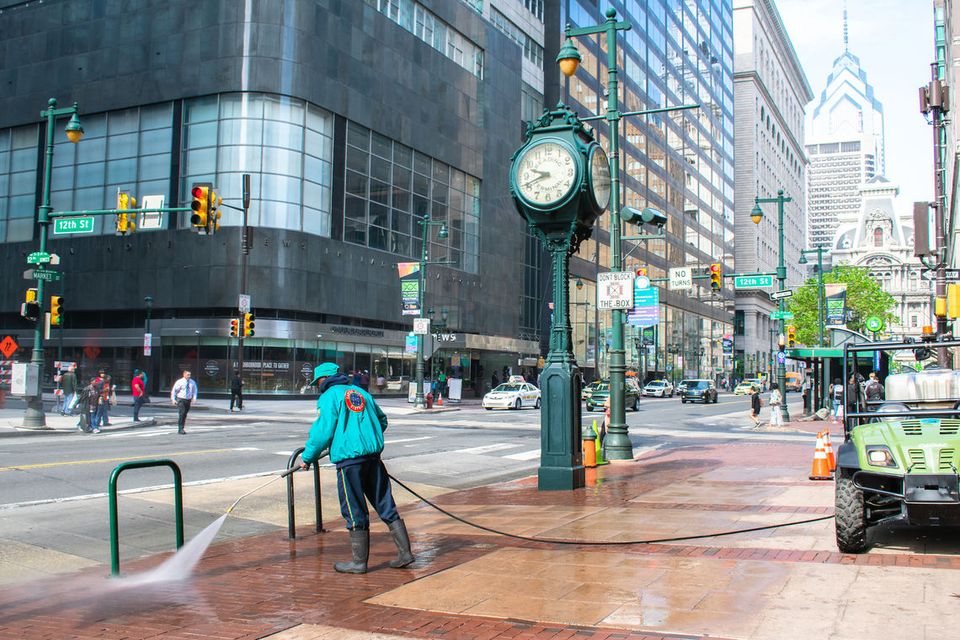Introducing our journalists: Nick Russo

To date, most of my published work has been focused on Philadelphia’s scourge of litter and illegal dumping. The reason for this focus is simple: trash-strewn streets are unequivocally bad, and public desire for cleaner streets is widespread. Piles of construction debris, household refuse, and tires dotting sidewalks and vacant lots are a danger to pedestrian safety and public health. Children are forced to navigate garbage mazes and walk in the street on their way to school. Tire piles become mosquito breeding grounds and rodent refuges.
Worse still, these mounds of waste don’t just spontaneously materialize: individuals make the decision to unload debris onto the streets of poor neighborhoods for their own financial gain, sometimes flagrantly ignoring community pleas for the dumping to cease. The city’s trash crisis, then, is not just about the health, safety, and beauty of our public spaces. It’s about justice. Our failure to secure clean streets for our most impoverished residents is an active injustice to them.
This injustice is all the more infuriating because keeping streets relatively clean is one of the most basic functions of municipal governance. Providing this service effectively is almost entirely a matter of political will. As Part & Parcel cofounder Jon Geeting put it, our trash crisis is a rare example of “something city government alone could solve if our local elected leaders wanted to devote the time and attention.”
For as long as our trash crisis remains unsolved, the bar for public achievement in this city will be fairly low. But with sanitation activist Terrill Haigler, aka Ya Fav Trashman, shaking up the local scene by declaring a run for an at-large city council seat, it’s conceivable that we’ll clear the clean streets bar in the not-too-distant future. And what then? Everyone can agree that streets are not for trash. But once we rid our streets of trash, what should we fill them with?
What are streets for?
In the words of 5th Square Co-Chair Dena Driscoll, “streets are for bouncy houses.” They’re also for streeteries and live music and block parties, walking and biking and buses and trolleys. They’re for mixed use development – first-floor retail with several stories of office space and apartment units rising above. They’re for sculptures, murals, and trees, public speeches and community organizing. Beyond basic safety and cleanliness, streets should be vibrant hubs of art, culture, business, and recreation. They should be community destinations, not just corridors from here to there.
But building a streetery, hosting live music, soliciting a protected bike lane, commissioning a local artist to paint a mural, or, yes, even just planting a tree… all of these things are controlled, at some level, by city officials and local ordinances. Your favorite restaurant might need a streetery to keep its doors open during a global pandemic, but if it’s so much as ten feet outside a zone approved by City Council, it might be out of luck. Or, even if it’s inside the zone of approval, it better hope its proposed design gets the nod from the Art Commission. Every month, city agencies host dozens of meetings focused on zoning rules, public transit, sales of public lands, public art and architecture, and other features of the built environment.
At these meetings, then, Philadelphia’s city officials are constantly deciding the fate of our streets. While technically open to the public, these meetings typically happen on weekdays during normal business hours. Even if they took place at more accessible times, the fact of the matter is that most of them are incredibly mundane. Like, mind-numbingly, please-God-make-it-stop tedious. So even if concerned citizens could make it to these meetings, they’d have to be borderline masochistic to attend them willingly. Nonetheless, the decisions made in these meetings matter – a lot.
Which begs the question: why don’t local media outlets regularly cover them? Pay someone to suffer for the greater good, sit through hours of formalistic bureaucratic procedure, and digest it all down to the important parts. The answer, in part, is that there’s a limit to the readability of even the most easily digestible version of this kind of content. Crime, corruption, and high-profile political conflicts will always be more captivating than the decisions of the Philadelphia Land Bank.
But that’s not the whole story. There are plenty of community leaders, business people, policy wonks, and general urbanist geeks out there who would love to have this content at their fingertips. It’s simply been a while since any media organization in Philadelphia made a sustained effort to provide a quality city planning watchdog newsletter to such an audience. Part & Parcel is an attempt to fill this gap. In doing so, it hopes to help concerned Philadelphians take an active role in shaping the future of their streets.
It’s relatively straightforward to be anti-trash. It’s more complicated to be pro-bouncy house (and public art and affordable housing near public transit and so on and so forth). Part & Parcel strives to make implementing positive visions for our city a bit easier by covering the tedious planning meetings that currently fly under the radar. Positive visions provide the ultimate reason to fight for clean streets in the first place. Clean streets are only the first step on the path toward vibrant streets.
And that’s why I don’t just write about trash.
